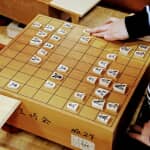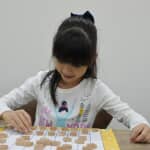Shogi 19 July 2017
Manners of Shogi That Will Impress Others
There are many manners to play Shogi. Today I will introduce several manners that you don’t necessarily have to follow, but knowing them, or doing them, you would be considered as a well-mannered person.

1. Set up pieces in order of Ohashi style or Itou style.
There are two styles of setting up pieces, Ohashi style and Itou style. Both of them were used by and named after two of three major Shogi families of Edo period, Ohashi family and Itou family.
Currently, Ohashi style is mainly used, as it is easy to remember (I-tsu-tsu adopts Ohashi style). Actually, complicated Itou style has a deep and cultural connotation. This style has a unique setting order in which the long range pieces, such as Kyo (Lance), Kaku (Bishop), and Hisha (Rook), will be set after 9 Fu (Pawns) are positioned. By doing so, your 9 Fu in the position will even virtually prevent attacking abilities of your long range pieces to the opponent’s base during setting up pieces. In other words, this style demonstrates care for others. Consideration is the essence of traditional Japanese culture.
If you remember its complicated order of setting, it is great! Moreover, if you realize the intention of this style based on traditional Japanese culture, I think you are awesome!!
2. Toss five Fu to decide which player plays first.
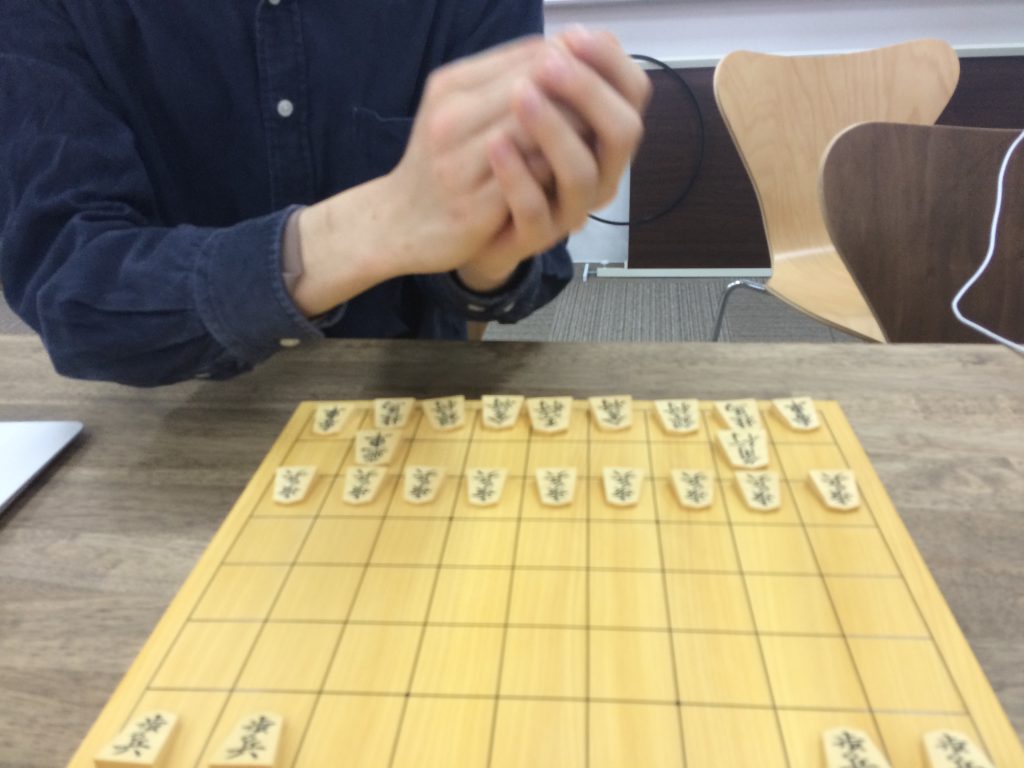
Shogi game has a particular method to decide which player plays first. That is a Furigoma, or “piece toss”, in which one of the players shakes and tosses five pieces of Fu on the board.
The procedure is:
First, from the initial position, the player who is a senior or in the higher rank will take his/her five pieces of Fu in both hands, which are set from the third row to the seventh row. Then, shake them well in hands.
Next, toss the pieces on the center of the board.
*By the way, when a board with legs is used, as for title matches, a player often tosses pieces on the tatami mats, avoiding dropping them from the board.
Lastly, count the number of tossed Fu with an unpromoted face, “Fu”, and with a promoted face, “To-Kin (Promoted Pawn)”. If the number of pieces with an unpromoted face is larger than that of pieces with a promoted face, then the player who tossed pieces will play first. When the number of “To-Kin” is larger, the player who didn’t toss them will play first.
Also, used in rare cases though, there are exceptional rules in Furigoma: a case in which a piece or some pieces stand(s) on the side (see picture #1) or a case in which a piece or pieces is/are on the top of the other (picture #2). In those cases, such pieces will be excluded.
For example, in case of a picture #2, at first glance it looks like the number of To-Kin is greater. However, since two pieces of To-Kin are overlapping one another, they are excluded. Among the other three pieces, two pieces are with Fu and one with To-Kin. So, the player who tossed pieces is going to play first.
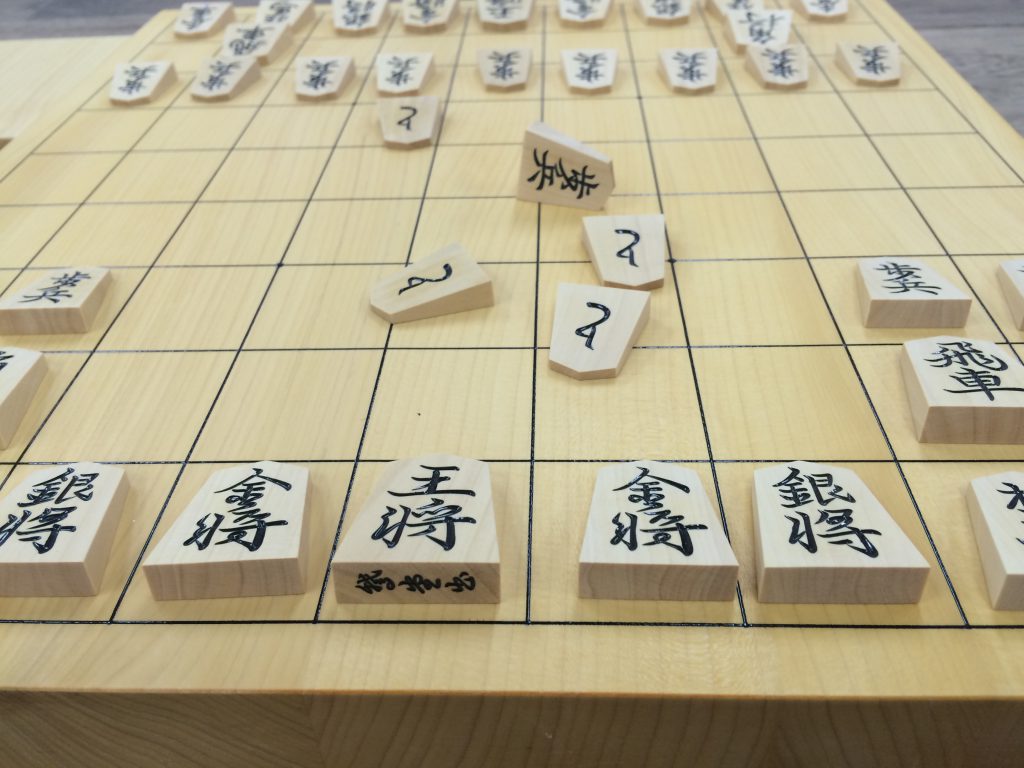
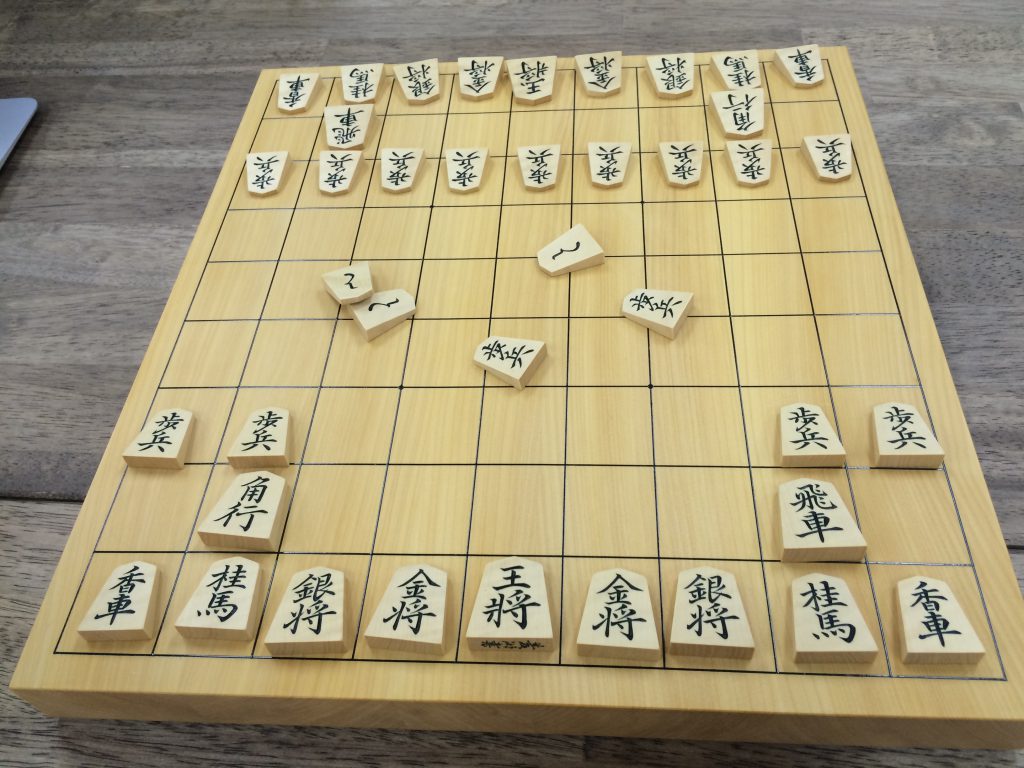
3. Move a piece with a clear sound.
I’ve always wanted to make a clear sound at moving a piece. You, too? I think the beautiful movement of a piece could create a clear sound when the piece hits the board.
Once I imitated the motion that our president, Ms. Nakakura, made at moving pieces, I couldn’t do well. I asked her for tips to make this beautiful sound.
The tips are:
1. Pick a piece with your thumb and middle finger.
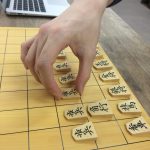
*Another way is to pick a piece with your forefinger, middle finger, and ring finger.
2. Set up the piece erect with your thumb.
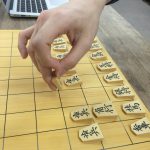
3. Put your forefinger under the piece (to do so, don’t put the forefinger deeply!).
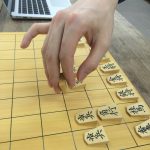
4. Release the piece.

Probably you may have some troubles following the procedure above. As you know, there are only few who can do this without practice. I assume that professional players’ beautiful motions are products of their hard works. Let’s practice!
4. Place captured pieces in a fan shape on a piece stand.
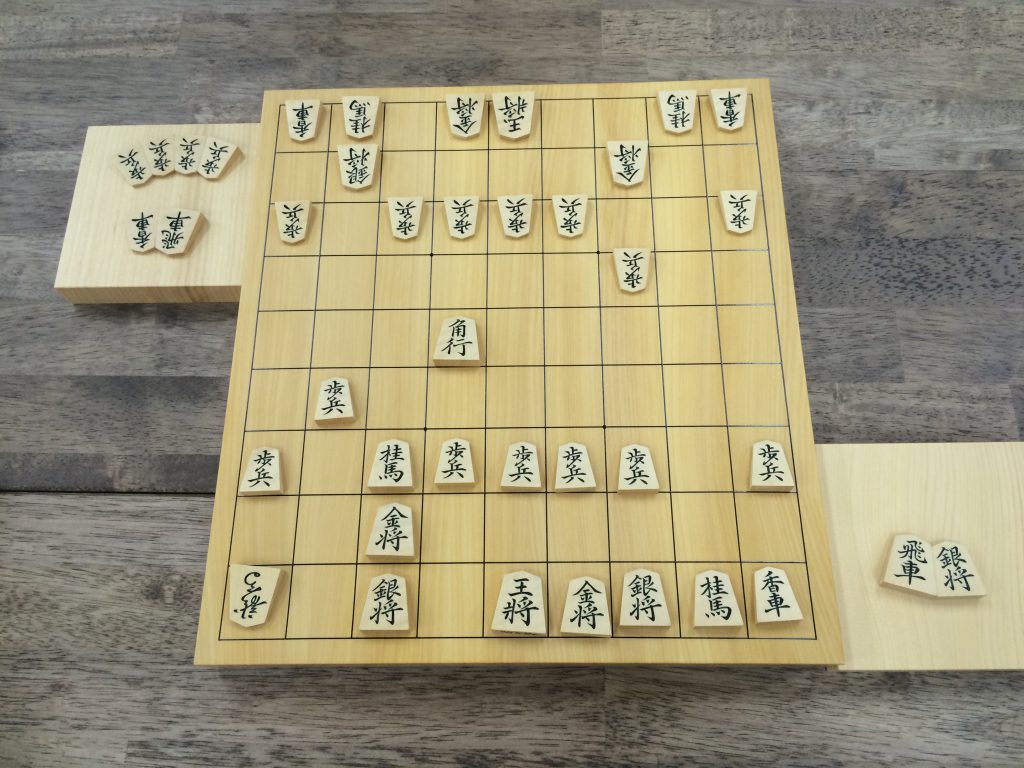
When you are used to playing a Shogi with smartphone apps or PC games, it might be quite common that a captured piece is automatically placed at the bottom or the side in the screen. But, during an actual game, you need to put the captured pieces on your piece stand by your hand.
In your rule books, you could find no instruction about how to place them. You are, of course, free to choose your way to place the pieces. Even so, Shogi is a game that puts its priority on a complete disclosure. You are supposed to place captured pieces neatly, so that your opponent can easily realize what you have in your hand. The more sophisticated layout of your captured pieces is, the more clearly your opponent can view what you have.
In order to organize pieces on your piece stand, you may not only put pieces in the same direction, but put them at the center of a piece stand as much as possible, or group them by size. Moreover, when you have many, you can place them together to make a beautiful fan shape. Your piece stand will be more organized and look neat!
5. Place a chess clock away a little from a Shogi board.
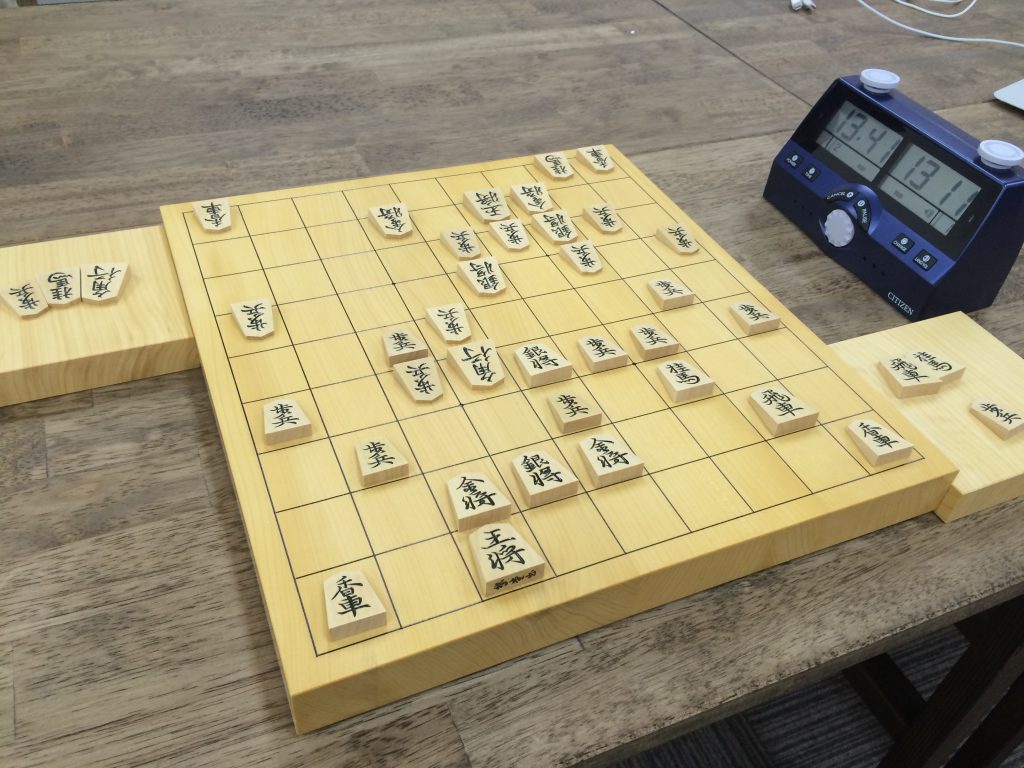
There are not many occasions in which a chess clock is used, except in the tournament situations. Even we rarely use a chess clock, it’s good to know the smart way to use it.
Normally, you may want to keep a chess clock at hand, so that you can push it and look at it easily. Some players place a clock away a bit from a Shogi board.
This is based on the same intention of #4, consideration for others. You may place a clock away from a board in order for your opponent to get a better view of your piece’s layout, taking care not to have the clock’s shadow on a board, or not to have any obstacle to look at a board. Shogi players are usually under the situations in which every moment is of value. Players who can maintain consideration to others under any situation must be persons with their mental space and with confidence in Shogi abilities.
I provided Shogi manners with which you may be considered smart, if you know or master them. How was it?
Having these five manners, I am noticing that Shogi is filled with gentlemanship that requires us to possess care for others.
Basically, we, I-tsu-tsu, are very happy to know that children are enjoying Shogi, and learning basic rules and manners, like greetings. Also, we are positive about children’s free will to place or move pieces. With these in our mind, we do hope children will discover more profound features of Shogi and feel joy in playing such a wonderful game, Shogi.
Our blog has more articles about Shogi. Please check them out!
